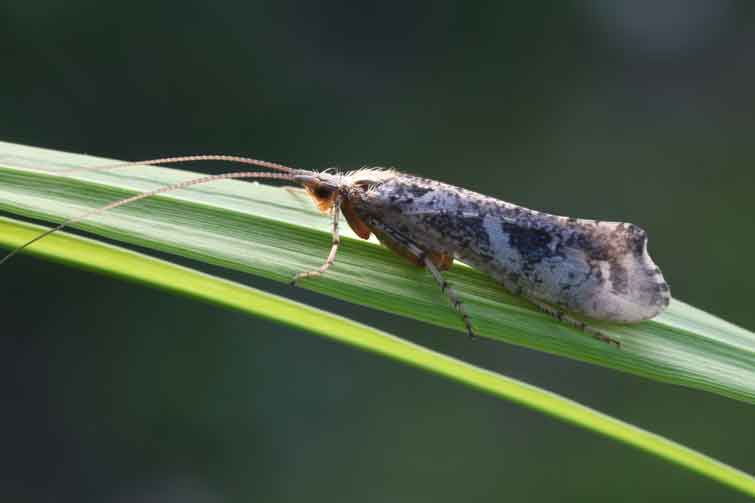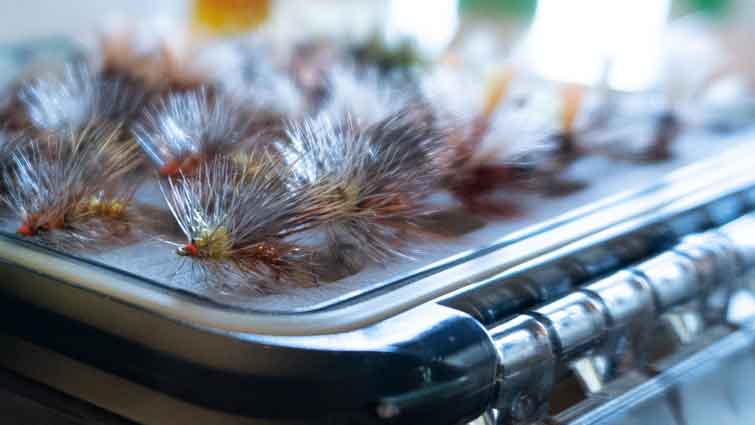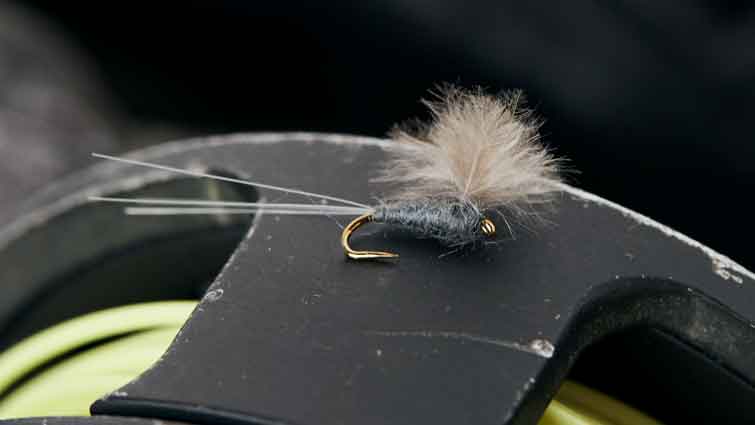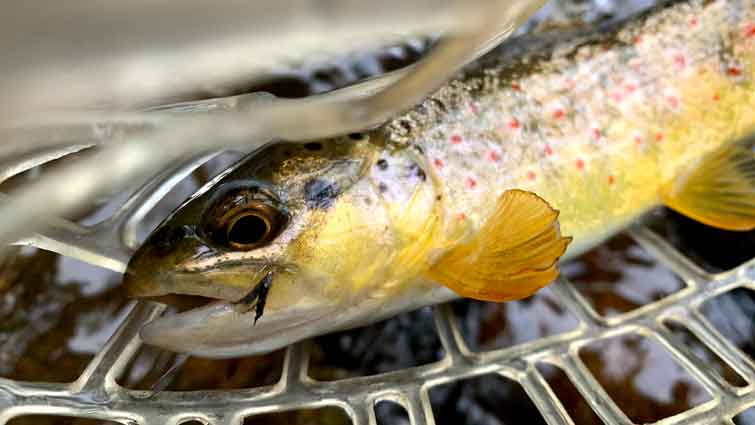Knowing what you're fishing for is one of the most important things about fly fishing. It allows you to choose your equipment and fly selection more accurately than using random gear. When you are fly fishing for trout, proper fly selection can make all the difference. But how do you know what fly is in your box and when to use it?
As a general rule, fly fishing flies are broken into four lifecycles: nymphs, emergers, adults, and spinners. Typically fly patterns used for fly fishing will be a lifecycle of one of the following:
- Midges
- Mayflies
- Caddis,
- Stoneflies,
- Annelids or Worms,
- Scuds or Sowbug,
- Damselflies or Dragonflies,
- Terrestrials
- Eggs
Streamer and Saltwater Patterns represent juvenile fish, crawdads, shrimp, and crabs, depending on the species of fish you are targeting.

All fly fishing is done with flies; it's just a matter of what kind. In this article, we'll discuss how to distinguish between various fly patterns, including midges, nymphs, caddis, and stoneflies.
Distinguishing Between Fly Patterns
Distinguishing between fly patterns is important because it helps you choose the correct fly for your fishing conditions. It also allows you to check that you have all of the proper equipment for each pattern you decide to tie so that they will work correctly.
Midge Nymph and Emerger Cycles
Midges are one of the most common and prolific insects in freshwater and saltwater. The midge adults look like tiny gnats, but they don't behave much like flies. They're usually found near the water, the Midge Nymph existing below the surface.
Midge larvae are tiny worms with segmented bodies that are frequently red as a result of their diet. Midge larva are the typical "nymph" form of a midge and are fished subsea throughout the water column.

There's a lot of different species of midges, so it helps to get familiar with them to know what you have. Since adult midges are so small, it can be tricky to identify them by size. However, many species have distinctive patterns that can help you distinguish between them.
Midge - Nymph Stage
The Midge, in its Nymph stage, typically has wormlike movements, which occur by contracting its body. This is what gives it the characteristic look of a worm moving through the water. This movement helps it hide from prey and helps move up to take better advantage of currents for faster movement.

The Midge Nymph has no noticeable front legs and will typically be the smallest insect you'll come across. The majority of midge larvae are brown, gray, or black in color. The average length of a midge larva is 3 to 10 millimeters—about the size of a size 16 to 22 long-shank hook.

Midge - Emerger Stage
The Midge in its emerger stage looks identical to a midge nymph, but you will notice a small bubble or husk on the underside. This bubble is a new air bubble that has been trapped on the insect's back. This happens because the Midge emerges underwater, and the surface tension of the water creates this upper layer.
The emergent form of the midge patterns is midge pupa. The air bubble they use to emerge and the U-shape they frequently make while just below the water's surface are the main distinctions between a midge larva/nymph and a midge pupa. Because of the flash of the bead, many midge patterns with beadheads appear to be pupae.

When fishing with Midge Emerger's, you'll find they are one of the most successful flies you can use as they will imitate any other insect or bug trying to emerge out of its nymph shell. What makes them so successful is their ability to float high in the water column. They also behave very similarly to an adult midge.
Midges are very active underwater, so it's important to use the right fly pattern for your conditions. Midge larvae are usually bottom feeders, so you should fish your flies around the bottom of the water column. Adult midges tend to rise up towards the surface for air, so try fishing them near where they tend to float up.

Caddis Nymph and Emerger Cycles
Like midges, caddis also has larvae that live in or around freshwater. They're not as active as some other species preyed upon by trout and other aquatic creatures. Instead, they'll spend most of their time resting on rocks or vegetation along the shoreline of ponds and lakes, waiting for something to come by that they can eat.
Caddis Nymph
Look for caddis casings. Caddis have a lot more legs than mayflies and only one tail. Caddis Larvae You can tell that you have caddisfly larvae if you see odd, fluffy clumps in the water. These clumps will contain between one and four larvae each. If you don't happen to see them in the water, you might find them on aquatic vegetation or rocks by it instead.


Caddis Emergers and Adults
Caddisflies look like moths and flies mixed together, and they only live for a few days after emerging from their larva stage. They typically only fly at dusk, which is why most anglers call this time of day "the magic hours." In some areas where these insects are abundant, you typically see fewer trout feed during this because many of them will be feeding on caddisflies.

Look for brown mottled wings and legs that are about the same length as their abdomens. Adult caddisfly wings are also tapered at the ends, which is why they look like spears or arrows when in flight.
Caddis normally come out of their pupa cases underwater, but they sometimes emerge more quickly than usual when there's an abundance of rain or some other disturbance nearby. If you see some emerging near the surface of the water, you can capitalize by fishing them with some emerger patterns tied to imitate their early stages (when they're still clumps of larvae).

Mayfly Nymph and Emerger Cycles
Mayflies are a very important part of a trout's diet, which is why they make for great beginner flies. Mayfly larvae tend to stick around rocks or other aquatic vegetation near the bottom of the water column, while adult mayflies will fly up towards the surface to get air - making them easy snacks for trout. In some cases, however, these aquatic bugs swarm and rise up all at once, so you'll see your local fish feeding on them in large groups.
Mayfly Nymph
Look for three tails, and pick out fly patterns that have three distinct tails. Single Pronged feet. You can find mayfly larvae by looking out for dark, wormlike clumps. One end of their bodies will always be flat and look like it's stuck to something under the water, while the other end has a thinner, threadlike appearance that looks more like an actual worm.

Mayfly larvae or nymphs are great for trout because they'll live in the same vegetation or rocks that the young of other insects are clinging onto.

Mayfly Emerger and Adults
Prolonged wings and a husk on their lower half. Mayfly adults can vary quite a lot in size, but you'll find most of them have elongated bodies with two wings. They also have three tails sticking out behind their bodies - giving them their nickname "three-pronged flies."

When these bugs come out of their nymph stage at the bottom of the water, there's an abundance of them emerging all at once. If you see mayflies that look like dark spots on the surface, try fishing your fly patterns near there to imitate what midges and smaller insects are doing when trying to emerge from their larva stage. Mayfly adults vary significantly in color between species - so you might need to look closely at the patterns on their abdomens.

Stonefly Nymph and Adult Cycles
Stoneflies are another great option for beginner fly anglers who are looking to catch trout. You can find them by looking under rocks, or leaf litter in the water have, where they usually crawl around waiting for a meal to come to them. Stoneflies have no emerger cycle as they crawl on to land to move into the adult stage.
Stonefly Nymph
The Stonefly Nymph only has two tails. Their feet have two toes, resembling pinchers. Typically much larger than a mayfly. Stoneflies typically only come out of their larva stage at dusk. During the day, they'll stick to the rocks and other covers in the water that smaller insects use to escape predators - then, when night falls, these aquatic insects will crawl around for food on leaves and driftwood.

Look for two tails and long tube-like bodies with two spots attached around its thorax. Their legs will also have small pincers or claws on them, which you can often see moving as they walk along with things under the water's surface, looking for a meal. Stoneflies adults look very similar to mayflies but are generally much larger.
How Do You Identify Flies in Your Fly Box?
identifying different species of flies is important for fly fishing. Some of the most common flies are midges, which live in freshwater (and even some saltwater). It is important to know how to identify these little bugs so that you can fish the correct type of pattern for your area.
To identify different fly species, look for the characteristics that set them apart. For example, If they look like a mosquito, but they aren’t biting you, they’re midges. You’ll often see them buzzing around and above your head in huge swarms.

If the fly has wings that stand straight up like a sailboat, it's almost certainly a mayfly. They generally emerge/hatches in the morning and evening hours (though occasionally more), and you'll notice trout consuming something on the surface slowly and methodically. There's a good chance it's a mayfly.

The wings of caddisflies are folded rooflike over the abdomen at rest, resembling moth wings. Many-jointed antennae are long and have a large basal segment.

Two claws at the end of each leg, wing pads in mature larvae, and an abdomen ending in two long, segmented filaments are some of the characteristics that distinguish stonefly larvae. Wing pad shape, gill presence and position, and labium form are examples of characters that may be used to identify adult stoneflies.

What if the Pattern in My Fly Box looks like Two Flies?
There are tons of patterns on the market that imitate two different species of flies, a common food source for trout. Some are tied to represent a mayfly and a stonefly. Some define a mayfly and a caddis. These patterns are great at targeting both species in the water. These attractor patterns are excellent choices when those flies are in season or are found in the body of water that you are fishing.

Great fly patterns for the Stonefly/Mayfly Nymphs are:
Copper Johns size 12-18
Great fly patterns for the Caddis/Mayfly Nymphs are:
Prince Nymph size 12 and 14
What Flies Are in Season for Fly Fishing?
The most influenced by fly selection season of the four seasons you fish is Spring. The game of fly selection is dominated by midges, mayflies, and caddis. In the fall and winter, caddis and mayfly patterns are important.
In October and November, midges and mayflies are prevalent, as well as egg and worm patterns. Mayfly adults are the most obvious flies to imitate. They're available in all sizes with a wide range of colors, so they provide plenty of options for fly fishing.
To see our full guide on what flies are in season, check out our extensive article here >
Conclusion
If you want to get more out of your next fishing trip, it's important to know what species of fish you are catching and where they live. This will help you choose your equipment appropriately and ensure that you're using the right flies at the right time.
Fly fishing is all about the details. Understanding what species of fish you're going after, where they are in their life cycle, and which fly patterns to use will help your catch rate increase immensely.
About the Author
Matthew Bernhardt, a third-generation Coloradan, grew up at the forefront of the state’s fly-fishing revolution, enjoying time on the water, side by side with experienced guides and lifelong anglers.
By combining his passion for fly-fishing with input from other experienced fly-fishers and guides and his fine arts degree from Colorado State University, Matthew spent five years carefully developing the Drifthook Fly Fishing System, built to help every angler catch more trout.
When he’s not spending time with his wonderful family, you’ll find him out on the water catching MONSTER trout, and he anxiously looks forward to the day when his kids are old enough to join him there.





1 comment
Todd Montgomery
This is the best breakdown I’ve read on flies & hatches. I’m relatively new to fly fishing & really liked this article.
This is the best breakdown I’ve read on flies & hatches. I’m relatively new to fly fishing & really liked this article.